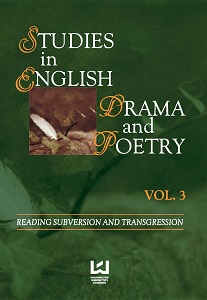Tolkien’s Legend of Sigurd and Gudrún: Creative Drama or Scholarly Exercise?
Tolkien’s Legend of Sigurd and Gudrún: Creative Drama or Scholarly Exercise?
Author(s): Rory McTurk
Subject(s): British Literature
Published by: Wydawnictwo Uniwersytetu Łódzkiego
Keywords: Tolkien;Legend of Sigurd and Gudrún;creative drama;scholarly exercise
Summary/Abstract: J. R. R. Tolkien’s Legend of Sigurd and Gudrún consists of two long narrative poems on the major events of Völsunga saga, making use, where possible, of eddic sources as well as the saga, and accompanied by notes written by Tolkien himself, but edited and augmented by his son. The poems, written in eddic metres and consisting to a large extent of dialogue, are amenable to analysis in terms of Terry Gunnell’s concept of dialogic eddic poetry as a form of drama; hence the use of the term “drama” in the paper’s title. The first of the two poems partly fills the gap left by the lacuna in the Codex Regius, the manuscript in which the edda poems are mainly preserved, but with a much smaller number of stanzas than the 200–300 stanzas that Tolkien evidently believed the lost leaves contained (221), the reason for this apparently being that the smaller number of stanzas accords better with the overall structure of his poem. The book as a whole thus shows a tension between scholarly and creative impulses. Tolkien’s treatment of his sources is considered in the context of his fondness for “creating depth” (identified by Shippey 272–81). Tolkien’s exclusion from his poems of the figure of Áslaug, presented in Völsunga saga and its sequel, Ragnars saga, as the ancestress of a line of kings and the daughter of Sigurðr and Brynhildr, who nevertheless claim to have had chaste relations, leads to a discussion of the relations between these two and their equivalents in related narratives: the Faroese ballads of Sjúrður, the Middle High German Nibelungenlied, and the German-influenced Old Norse Þiðreks saga. The prominence of Sigurðr’s horse in these various narratives in turn raises the question of whether the presentation of relations between Sigurðr and Brynhildr in Germanic and especially Scandinavian tradition may owe something to a distant memory of the Indo-European ritual associated with the installation of kings, in which, as indicated by M. L. West, the queen lay with the corpse of a stallion while verses were chanted encouraging it to impregnate her (414–19).
Book: Studies in English Drama and Poetry vol. 3. Reading subversion and transgression
- Page Range: 151-165
- Page Count: 15
- Publication Year: 2013
- Language: English
- Content File-PDF

